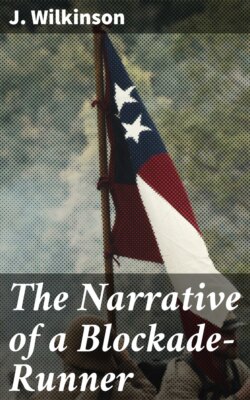Читать книгу The Narrative of a Blockade-Runner - J. R. Wilkinson - Страница 9
На сайте Литреса книга снята с продажи.
FOOTNOTES:
ОглавлениеTable of Contents
[1] The belief still prevails, probably, at the North, that extensive preparations had been made by the South for the war. But General Joseph E. Johnston who was assigned to the service of organizing and instructing the Virginia volunteers called out by Governor Letcher states the contrary. He asserts that all the arms to be depended upon at that time, were those found in the Southern arsenals, U. S. muskets, and rifles of discarded patterns to the number of about 75,000; 40,000 flint muskets belonging to the State of Virginia, and 20,000 procured for the State of Georgia by Governor Brown.
It was charged that Mr. Floyd of Virginia while Secretary of War under President Buchanan had caused the removal of public arms to the Southern arsenals; but a Committee of the House of Representatives, in 1861, exonerated Mr. Floyd from the charge, and the chairman of that Committee was the Hon. Mr. Stanton, a prominent and zealous member of the Republican party.
General Johnston, who was in a position to know the facts, states in his "Narrative, etc.," that the "Confederate States began the war with one hundred and twenty thousand arms of obsolete models, and seven hundred of the recently adopted weapons rifled-muskets, and the United States with about four hundred and fifty thousand of the old, and all of the modern arms that had been made since the adoption of the new models."
When in August, 1861, it was in contemplation to send the Army of Northern Virginia into Maryland, want of ammunition, according to the distinguished authority just quoted, was one of the chief obstacles to the project.
[2] The allusion is made to Genl. Mears, who commanded at Acquia Creek and to the Baltimore "Tigers", at the time commanded by Captain Thomas.
